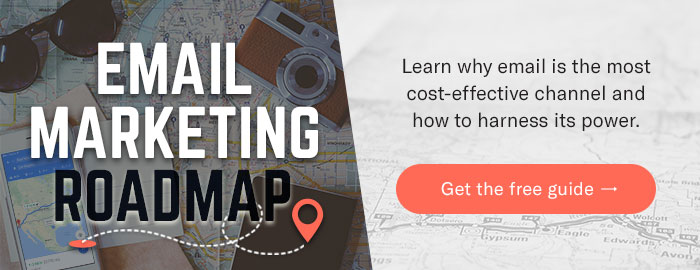Perhaps you’ve heard of email tracking, or are familiar with the idea of tracking clicks or opens but haven’t looked much further into how it works. But does email tracking really matter to your business? In short, yes, it really does.
Let’s get straight to the point: email tracking is nothing new and certainly not going anywhere. It won’t (or shouldn’t) surprise you to know the emails you receive from that big box store or the newsletters you subscribe to are being tracked.
According to OMC, an email intelligence company, 99% of bulk emails, like newsletters, are tracked. Why? Because email tracking helps businesses learn what content elicits a response from their customers. Gathering data like clicks, time spent on a website, or whether you buy something after opening that newsletter is all incredibly valuable.
The importance of email tracking is in the data it yields. That data helps you answer questions like the following:
1. Did you get my email?
With email tracking, never ask this question again! By using email tracking, the sender can see who opened their emails and when. Over time, you will learn who are the most active on your email list and what content fuels increased engagement.
Bonus Content: Grab a copy of our Email Marketing Roadmap.
Even better, when you know who is opening and clicking on emails, you save time by reaching out to the most interested leads. If you see the same person reading articles on ways to save money, mortgage loan rates, and home buying trends, it could be a good time to reach out and see if they are in the market to buy. Which leads us to the next point…
2. Is this lead hot or not?
When you are pressed for time (so, every day), you need to focus your time wisely. Reaching out to only the most qualified and interested leads or customers is one way do so. Someone who opened your email 5 times in the last 48 hours and clicked a download link twice is ready for a call. As a result of monitoring these clues, you can see who may be ready to move to the next stage of the sales cycle.
3. Where did you hear about us?
 Referrals are a huge part of successful businesses. For many consumers, they spend a significant amount of time crowdsourcing, researching, and comparing all the information they can get before buying.
Referrals are a huge part of successful businesses. For many consumers, they spend a significant amount of time crowdsourcing, researching, and comparing all the information they can get before buying.
Having current and past clients vouch for you will help you stand out from the competition. Email makes it easy for people on your list to forward your content to prospective customers.
Nielsen found 82% of consumers seek recommendations from family and friends before making a purchase. That’s huge! A referral can play a huge part in your success by giving a buyer extra confidence to reach out sooner than later.
4. Did I say something?
You can’t please everyone all of the time. That’s true in life and with email marketing as well. 61% of consumers prefer to be contacted by brands via email. That still leaves a portion of people who may not.
Unsubscribes happen, but what’s important is what you do afterward. If you notice a spike in unsubscribes after an email goes out, take a closer look at it.
- Did you miss a broken link?
- Was the content disconnected from the subject line?
- Have you changed the frequency of your email sends?
- What else has changed between the last time you saw unsubscribes from your list?
It could be one of these causes or maybe it’s something else entirely. Either way, use unsubscribes to learn more about what your audience does not want to see.
5. Is this content interesting?
 Engagement in individual emails matters, but it’s more important to look at engagement over time. Take advantage of the metrics provided by email tracking and look at the way your audience interacts with your content over several months to a year.
Engagement in individual emails matters, but it’s more important to look at engagement over time. Take advantage of the metrics provided by email tracking and look at the way your audience interacts with your content over several months to a year.
It’s easy to look at one newsletter that you feel underperforms and make a decision to change your layout or design. However, it’s looking at long-term performance generally provides more reliable evidence to make decisions. People over search their inboxes and re-engage with emails weeks or even months after the initial send. Keep an eye on engagement over time and make changes when you’re confident in your results.
Bonus: Email tracking infographic!
Check out this excellent infographic from Campaign Monitor about the 10 metrics all email marketers should track.
If you’re ready to see more from your email marketing efforts, OutboundEngine can help. Try a free demo and see how marketing automation can free up the time you’re spending writing and sending emails. Our team of professional writers and editors can take that task on for you, and our software will deliver your emails to your network automatically.




![Better Email Etiquette Equals Better Marketing Results [16 Rules]](https://www.outboundengine.com/wp-content/uploads/shutterstock_411184843-1-400x250.jpg)

